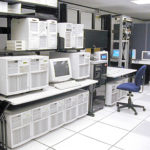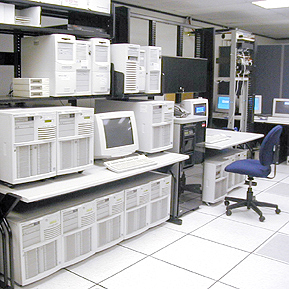
Education industry giant Pearson says its PowerSchool student information system (SIS) software will cease to support Macintosh database servers by Dec. 31, forcing Mac-using districts to make some tough decisions.
The announcement came as a surprise to many people, especially because PowerSchool was an Apple product before Pearson bought it from Apple in 2006. Apple earlier had acquired PowerSchool, a leading SIS product for Mac-based schools, from its eponymous owner in 2001.
PowerSchool runs on an Oracle database. While Oracle issued a Windows update some time ago, Mac users are still waiting on the Oracle 11g update that would let them run PowerSchool.
“To maintain our commitment to providing great software, we need to upgrade to an Oracle version that does not support Mac servers,” Pearson said in a letter to PowerSchool customers that outlined the issue and gave schools several options.
“New customers, and existing customers who want to upgrade their hardware, would find new Apple servers are incompatible with the current Oracle database. Oracle has not provided a date by which the current version of the Oracle Mac Database will be certified on Mac OS X 10.6,” the letter said.
Pearson said it has “limited options” for school districts operating on Mac servers.
The letter advised that “all Mac customers should make plans to replace their Mac database servers with a Windows-based database server (physical or virtual). Pearson will discontinue support for the Mac database server effective December 31, 2010.”
Pearson said it will evaluate Mac support options if Oracle issues a Mac-compatible 11g version.
Customers using a Mac database server are eligible for six months of free hosting if they choose to move to a cloud-based implementation of PowerSchool, eliminating the need for a new server purchase. Pearson would be responsible for all software upgrades, backup, and restoration in its hosting environment. That offer expires on Dec. 15.
It would be difficult for Pearson to add a new Mac-compatible database to PowerSchool, the company said, because alternative database options for the Mac OS are limited and do not offer Oracle’s performance. Also, offering an additional database would mean large-scale new and duplicate development work, and the additional testing required to ensure proper functionality would “be better used to ensure the highest possible quality of core features and not just validate database-to-database equivalency.”
Some customers might opt to run a Windows emulator on their Mac servers—and virtualization is a viable choice, Pearson said, especially for smaller school systems.
Richard Bowler, director of technology for the Hardin School District in Montana, said his district opted to install Parallels Server for Mac 4, a virtualization technology optimized for Apple server hardware, which installs directly onto existing hardware and its host operating system and consolidates Windows Server applications on Apple hardware.
Bowler and his staff soon will move their district’s PowerSchool database from its existing server to the virtualized environment.
The district has fewer than 2,000 students and has 250 staff. Bowler said virtualization appealed to his staff because although the district is small, it has an extensive investment in technology and multiple servers.
“All of our schools are connected to a wide area network, so their internet service all comes through us and all use the same basic PowerSchool server,” he said. “So if we have to make a change, it will affect use widely.”
Bowler said a move to Parallels will cost the district less than it if it opted to move to the cloud. The district already has saved more than $50,000 because the product eliminates the need for multiple servers, and Bowler said he anticipates more savings as well.
Although different districts have different needs, “this is the way that we need to go,” Bowler said. “We’re very lucky to have a forward-thinking superintendent and board. We’re interested in technology suit the needs of our students.”
- Friday 5: Universal Design for Learning - April 19, 2024
- Educators love their edtech, but want more training - April 18, 2024
- Friday 5: College and career readiness - April 12, 2024



Comments are closed.